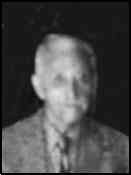1886-1973

From EB's CHIRP.
| HAROLD D. KANTNER 1886-1973 |
||
 |
||
| Harold D. Kantner, 1972 From EB's CHIRP. |
|
|
|
Editors Note: I was privileged to know Henry during several years before his death. He was an fascinating companion and a lifelong friend of aviation. I heartily recommend his book to you for more on Kantner and for the complete story of the Gordon Bennett Race. |
|
Knoxville Journal and Tribune, Knoxville, Tennessee: February 27, 1914, Transcribed by Bob Davis - 2-20-07 Aviators express every confidence of the proposed "round-the-world" flight becoming a realization. The stupendous race project in connection with the Panama-Pacific Exposition in 1915 has aroused much interest and comment in New York, and included in the discussion is the opinion that American aviators are handicapped and that aviation as science and sport needs the stimulus of reawakened public interest. Harold Kanter, of Newtown, Queens county, N. Y., is one of the aviators mentioned by Mortimer Delano, secretary of the Aero Club of America, as being likely to take part in the flight. Gustav Hamel, of England, who flew upside down for the especial benefit of the King and Queen, is most enthusiastic. "Provided they are able to overcome financial difficulties," he said, "I am sure that many will jump at the chance to make th eattempt." Raymond V. Morris, of New Haven, Conn., has also given notice that he has begun the plans for a new machine for transatlantic flight and would enter the competition. Word received in New York from Los Angeles stated that Lincoln Beachey has decided to enter the race." |
|
First Vice President Elect Harold Kantner died Tuesday, December 11, 1973 in Cloisters Convalescent
Hospital at San Diego of cancer. Private funeral services were held on Thursday, December 13th, followed by interment in the Greenwood
Memorial Park, San Diego, California. He was born in Meadville, Pa. February 23, 1886. 1911 Harold attended the Moisant School on Long Island and was taught to fly by Andre Haupert. He had already built a Bleriot type monoplane with a 50 hp Gnome motor in which he soloed June 30, 1911. He was given F. A. I. certificate number 65. He then became an instructor at the Moisant School and traveled over the South making exhibition flights. He also designed planes for Moisant which were sent to Guatemala and Mexico where he taught the purchasers to fly. He next traveled to France for the Gordon-Bennett Cup Race and then to Italy where he was an instructor at the Naval Base, Taranto. 1916 He was instructor to the Yale group in Buffalo, many of whom were commissioned and served as pilots abroad in World War I. After the war, he worked as designer and test pilot for Continental motors, Aeromarine, Fairchild and Convair. 1961 He retired from Convair in 1961 to devote himself to his home workshop. He is survived by his wife, Mildred McCoy Kantner, a son, Richard D. and three grandchildren. 

|